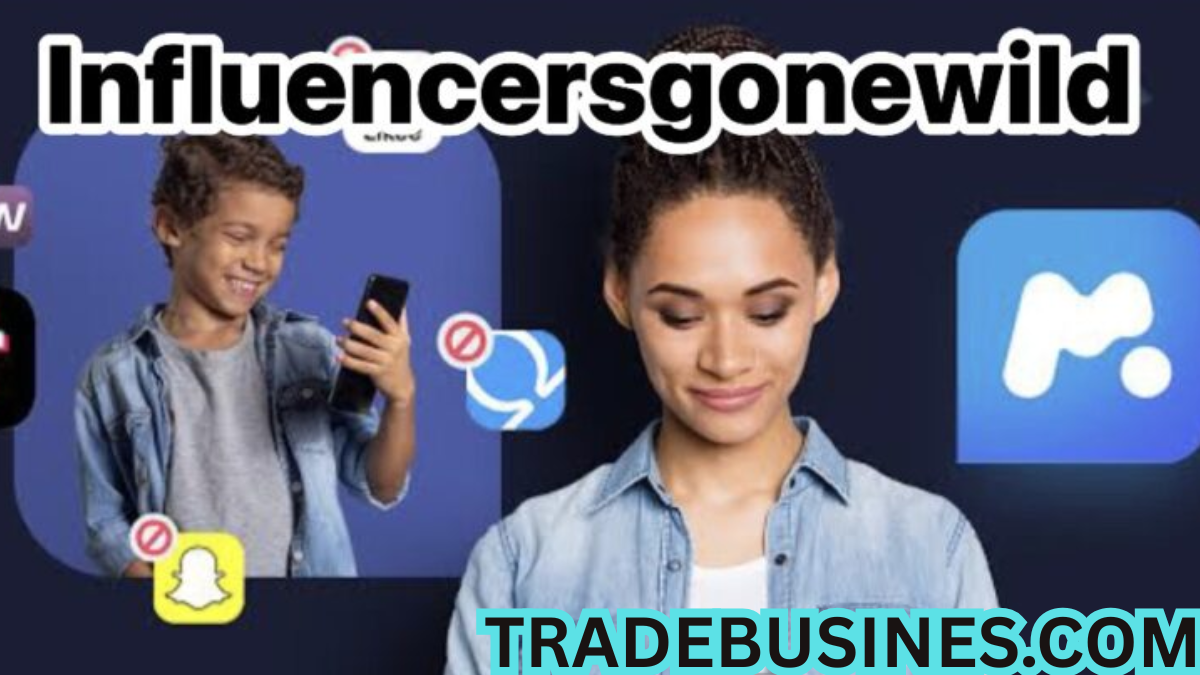Understanding the Emergence of i fluencersgonewild
I fluencersgonewild The digital landscape is constantly evolving, giving birth to countless trends, platforms, and online subcultures. Among these, “i fluencersgonewild” has surfaced as a notable and polarizing keyword. A blend of words that seemingly juxtaposes internet fame and risqué content, it hints at a phenomenon that merges the influencer culture with boundary-pushing media. The phrase itself suggests a deviation from the polished and brand-friendly image that influencers typically maintain, instead exploring a space where content becomes provocative, sensational, and at times controversial. This evolution reflects broader shifts in internet culture and user expectations in the age of monetized attention.
The Concept Behind the Term
The term “i fluencersgonewild” is a linguistic play, possibly inspired by other viral or adult-themed content portals that follow a “gone wild” naming pattern. Unlike traditional influencer marketing—built on aesthetics, relatability, and brand alignment—this term points toward content that flirts with rebellion, adult themes, and candid or unscripted moments. In many cases, it highlights influencers who break out of their mainstream image, shedding corporate filters in favor of personal expression, often with a strong element of sexuality or rawness.
What’s particularly noteworthy is how the term captures a subversive movement within influencer culture. It pushes back against curated perfection, opening the doors for influencers to express sides of themselves typically deemed off-limits by traditional social standards. This space appeals to curiosity, voyeurism, and the cultural shift toward authenticity—no matter how controversial that authenticity may be.
The Appeal of Unfiltered Influence
Much of the digital world has been built upon filters—literal and figurative. From airbrushed Instagram photos to meticulously crafted brand deals, the influencer economy thrives on appearances. But with growing public skepticism around polished content and a hunger for “the real,” platforms and keywords like “i fluencersgonewild” gain traction by offering what appears to be behind-the-scenes access to these public personas.
Audiences are drawn to the idea of seeing their favorite influencers outside the structured norms. Whether it’s risqué photos, candid videos, or personal rants, this content satisfies a deeper craving for vulnerability, rebellion, or even scandal. It’s this breaking of the fourth wall that makes such trends compelling—people want to know the parts that influencers don’t usually show.
Monetization in the World of Controversy
As influencers step into this bold territory, monetization becomes an inevitable aspect. Many influencers who align with the “gone wild” style of content seek platforms that support direct-to-consumer payment models. This shift away from ad-based or brand sponsorship models enables influencers to take ownership of their audience and content, making platforms that allow subscriptions, tips, and pay-per-view a favored choice.
The financial incentive is enormous. When traditional brands shy away from explicit content, the followers themselves often step in to fund their favorite creators. The success of this monetization strategy is proof of changing consumer behavior, where people are willing to pay not just for entertainment but for perceived closeness and exclusivity.
Social Media’s Role in the Popularity
Platforms such as Twitter, Reddit, and TikTok play instrumental roles in the promotion and discovery of “i fluencersgonewild” style content. Despite community guidelines on nudity or explicit content, savvy influencers and fans know how to operate within these boundaries, often using suggestive previews and cryptic captions to draw attention. Reddit, in particular, is known for its subreddits that act as hubs for discovering such creators, providing exposure and growing their online following.
These platforms act like a pipeline, offering teasers that link to the full content hosted elsewhere. It’s a strategy that’s both clever and highly effective, amplifying reach while skirting around censorship.
The Thin Line Between Empowerment and Exploitation
The phenomenon of “i fluencersgonewild” also prompts important conversations around agency, empowerment, and exploitation. On one hand, the movement can be seen as a form of digital liberation, allowing individuals—especially women—to control their image, earn directly from their content, and defy societal expectations. For some creators, the choice to showcase sensual or personal content is one of autonomy and expression.
On the other hand, the internet is a double-edged sword. There is always a risk that such content will be stolen, shared non-consensually, or weaponized against the creator. Moreover, the psychological toll of existing in such a high-exposure and often judgmental space cannot be ignored. What begins as empowerment can sometimes turn into an emotional burden, especially when creators face harassment, doxxing, or mental health strain.
Cultural Shifts and Public Perception
Society’s perception of digital intimacy has shifted significantly. What might have once been deemed scandalous now gets mainstream acceptance or even celebration. Yet, the phrase “gone wild” still carries with it a provocative charge—it suggests rebellion, deviance, or at least a departure from norms. When influencers embody this label, they are making a statement about the culture they inhabit.
For younger audiences who grew up with internet culture, these shifts may feel normal or even progressive. Older generations, however, might view them with concern or disapproval. This divide reflects a broader generational conversation about privacy, identity, and the value of online self-expression.
The Legal and Ethical Dilemmas
Navigating the “i fluencersgonewild” space also brings up legal and ethical questions. Is the content truly consensual? Are the viewers always of legal age? Are the platforms doing enough to protect the rights of creators? With the speed at which such content spreads and the limited oversight, it’s easy for lines to be crossed.
There are also intellectual property concerns. When content is paywalled or subscription-based, it’s not meant to be distributed freely. Yet leaks are common, and many creators find their work reuploaded on unauthorized sites, causing financial and emotional harm.
Legislation and platform policies are catching up slowly, but the responsibility often falls on the creators themselves to report violations and take defensive measures—an added layer of stress in an already demanding space.
Influence on Broader Digital Trends
Despite the controversy, “i fluencersgonewild” has impacted broader digital trends. It has contributed to the normalization of adult-oriented subscription platforms, the rise of private fan clubs, and the integration of risqué content into mainstream pop culture. Even influencers who don’t participate in this space sometimes borrow its aesthetics or promotional tactics to boost engagement.
It also forces conversations within brand marketing about authenticity, as brands now must decide whether they want to associate with influencers who don’t fit the clean-cut mold. Some progressive companies embrace this authenticity, while others shy away, creating new criteria for influencer partnerships.
The Psychological Toll of Always Being Watched
One of the less discussed yet deeply significant impacts of this phenomenon is the mental toll on creators. Living in a constant state of exposure—especially when content is provocative—can affect self-esteem, personal relationships, and even safety. It creates a paradox: the more personal and open a creator becomes, the more distant they might feel from their authentic selves due to public scrutiny.
Online fame is often glamorous from the outside but can be isolating on the inside. The pressure to constantly deliver, remain relevant, and manage public opinion can contribute to burnout, anxiety, and even depression. This is exacerbated in the “gone wild” space, where creators must balance their public personas with their private identities more delicately than ever.
The Future of Unfiltered Influence
As the digital space continues to shift, it’s likely that the “i fluencersgonewild” trend will evolve. With new platforms emerging and existing ones tightening their rules, creators may migrate, adapt, or innovate in how they share content. Technologies such as blockchain or decentralized media may offer solutions to ownership and content control, empowering creators further.
The larger question will be whether audiences continue to value this form of content or whether new forms of rawness and rebellion take center stage. Just as influencer culture itself has matured from mere product placement to full-blown lifestyle marketing, its more controversial offshoots will continue to shift in response to social, technological, and economic changes.
Conclusion
“i fluencersgonewild” represents more than just a viral phrase. It encapsulates a cultural moment—one where the boundaries of influence, expression, and monetization are being redrawn. While the content it alludes to may be provocative, the conversations it generates are necessary. As society grapples with the meaning of fame, privacy, and digital autonomy, such terms remind us that the internet remains a place of constant reinvention, both thrilling and treacherous.
Creators who explore this space must do so with eyes open, I fluencersgonewild balancing empowerment with caution, and passion with protection. For audiences, the challenge lies in consuming such content responsibly, with respect for the real people behind the screen. And for the platforms and policymakers, the need for ethical frameworks and protections has never been more urgent.
FAQs
What does “i fluencersgonewild” mean?
The term generally refers to a genre of content where influencers step outside the boundaries of traditional, polished online personas to share more risqué or unfiltered material, often with a focus on adult themes or candid moments.
Is the content under this label always explicit?
Not necessarily. While many associate it with adult or provocative content, it can also include emotionally raw, rebellious, or controversial posts that deviate from typical influencer aesthetics.
Why do influencers create this type of content?
Influencers may explore this space for reasons ranging from self-expression and authenticity to financial incentives offered by direct-to-consumer platforms.
Are there risks involved in participating in this trend?
Yes. Risks include mental health challenges, unauthorized content sharing, public backlash, and potential breaches of privacy or safety.
What platforms support this kind of content?
While mainstream platforms may restrict explicit I fluencersgonewild content, others such as subscription-based services allow for greater freedom of expression and offer monetization tools.
Is this trend beneficial or harmful to influencer culture?
It can be both. It allows for personal freedom and financial empowerment but also introduces challenges around exploitation, legal concerns, and the long-term psychological impact on creators.



